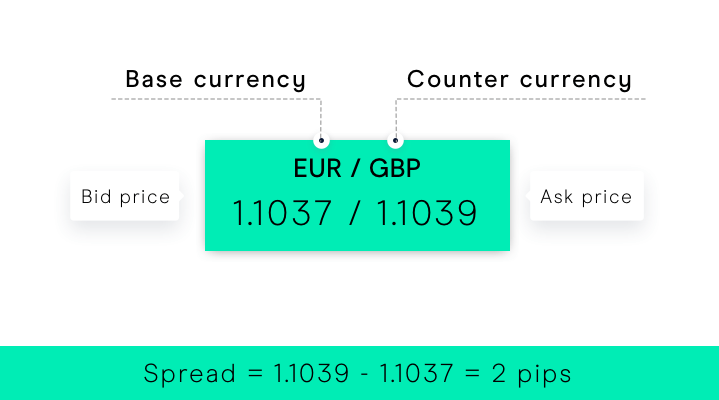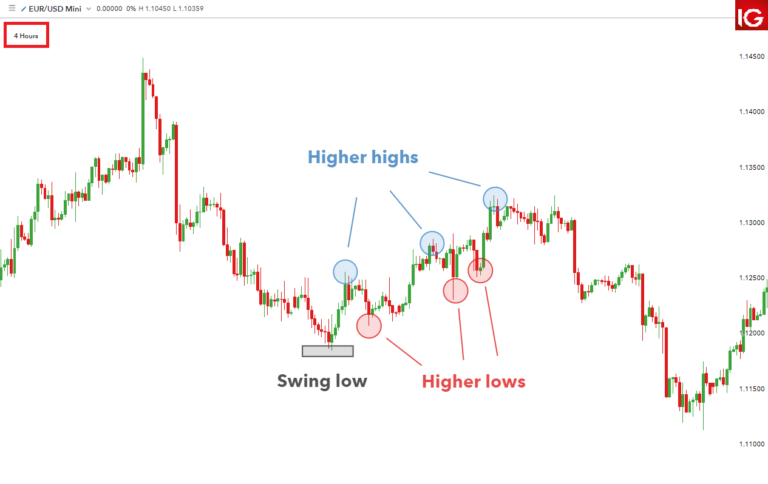Introduction
In the dynamic world of forex trading, staying ahead of market trends and making informed decisions is essential for success. Amidst the vast array of tools available to traders, forex trading signals stand out as valuable resources for identifying potential opportunities in the market. This article serves as a comprehensive guide to understanding and effectively utilizing forex trading signals to enhance trading strategies and achieve trading objectives.
What are Forex Trading Signals?
Forex trading signals are essential tools used by traders to navigate the complexities of the foreign exchange market. Here’s an expanded explanation of what forex trading signals entail:
Forex trading signals serve as invaluable aids for traders in the dynamic world of currency trading. These signals, often generated through a combination of technical analysis, fundamental analysis, or both, offer actionable insights into potential trading opportunities within the foreign exchange market (forex or FX market).
- Technical Analysis Signals:
- Technical analysis signals are derived from the study of historical price movements, chart patterns, and various technical indicators. Traders utilize tools such as moving averages, oscillators (e.g., RSI, MACD), and chart patterns (e.g., head and shoulders, triangles) to identify potential entry and exit points for trades.
- Fundamental Analysis Signals:
- Fundamental analysis signals stem from the evaluation of economic data, geopolitical events, and news releases that impact currency prices. Traders monitor economic indicators (e.g., GDP, employment data), central bank policies (e.g., interest rate decisions), and geopolitical developments to anticipate shifts in currency values and identify trading opportunities.
- Combination Analysis Signals:
- Combination analysis signals integrate elements of both technical and fundamental analysis to provide a comprehensive view of market conditions. By combining insights from technical indicators with fundamental factors, traders aim to validate trading opportunities and enhance the accuracy of their signals.
Forex trading signals are typically communicated to traders through various channels, including email, SMS, mobile apps, or directly within trading platforms. Upon receiving these signals, traders evaluate the provided information, assess market conditions, and decide whether to execute trades based on their trading strategies and risk tolerance.
These signals offer traders guidance on potential entry and exit points, recommended stop-loss and take-profit levels, and overall market sentiment. However, it’s crucial for traders to exercise caution and conduct their own analysis to validate signals before executing trades. Additionally, implementing effective risk management practices, such as setting appropriate stop-loss levels and managing position sizes, is essential to mitigate potential losses and preserve capital.
In summary, forex trading signals play a vital role in assisting traders in identifying trading opportunities in the forex market. By leveraging these signals effectively and combining them with their own analysis and risk management strategies, traders can enhance their decision-making process and improve their overall trading performance.
How do Forex Trading Signals Work?
Forex trading signals operate on the principle of analyzing vast amounts of market data to identify patterns or trends indicative of potential trading opportunities. Here’s a more detailed explanation of how forex trading signals work:
- Market Analysis:
- Forex trading signals begin with a comprehensive analysis of market data, which includes studying price movements, trading volume, and various technical indicators. Analysts or trading algorithms scrutinize historical and real-time market data to identify patterns, trends, and potential entry or exit points.
- Pattern Recognition:
- Through sophisticated algorithms or manual analysis, forex trading signals aim to recognize recurring patterns in price charts. These patterns could include support and resistance levels, chart patterns like triangles or head and shoulders, or technical indicator signals such as moving average crossovers or RSI divergences.
- Trend Identification:
- Another critical aspect of forex trading signals is identifying market trends. Analysts or algorithms assess the direction and strength of trends by analyzing price movements over different timeframes. This helps in determining whether the market is trending upward, downward, or moving sideways.
- Signal Generation:
- Based on the analysis of market data, forex trading signals generate actionable insights for traders. Signals may include specific instructions to buy or sell particular currency pairs, along with recommended entry and exit points, stop-loss levels, and potential take-profit targets.
- Communication to Traders:
- Once generated, forex trading signals are communicated to traders through various channels. Common communication channels include email, SMS, mobile apps, or directly through trading platforms. Some signal providers may also offer dedicated chat rooms or forums where traders can discuss and share insights.
- Evaluation and Decision-Making:
- Traders receive the forex trading signals and evaluate them based on their trading strategies, risk tolerance, and market conditions. They may cross-reference the signals with their own analysis and market knowledge before making trading decisions.
- Execution of Trades:
- After evaluating the signals, traders decide whether to execute trades based on the information provided. They may manually place trades through their trading platforms or use automated trading systems that execute trades automatically based on predefined criteria.
- Monitoring and Management:
- Once trades are executed, traders closely monitor their positions, adjusting stop-loss and take-profit levels as necessary. They continue to assess market conditions and may exit trades prematurely if the signals no longer support their initial trading thesis.
In essence, forex trading signals serve as valuable tools for traders, providing them with insights into potential trading opportunities derived from thorough market analysis. By leveraging these signals effectively, traders can enhance their decision-making process and improve their overall trading performance in the forex market.
Types of Forex Trading Signals
Types of Forex Trading Signals:
- Technical Signals:
- Technical signals are derived from the analysis of price charts, indicators, and patterns. Traders utilize various technical tools and methodologies to identify potential trading opportunities based on historical price data and market trends. Examples of technical signals include:
- Moving Average Crossovers: When short-term moving averages cross above or below long-term moving averages, it may signal a change in trend direction.
- RSI Divergences: Divergence between the price action and the Relative Strength Index (RSI) can indicate potential trend reversals or continuations.
- Fibonacci Retracements: Traders use Fibonacci levels to identify potential support or resistance levels based on the retracement of a previous price move.
- Fundamental Signals:
- Fundamental signals are driven by economic data releases, geopolitical events, and other fundamental factors that influence currency prices. Traders analyze economic indicators, central bank policies, geopolitical developments, and news releases to gauge the overall health of economies and anticipate currency movements. Examples of fundamental signals include:
- Interest Rate Decisions: Central banks’ decisions regarding interest rates can have a significant impact on currency values, with higher interest rates generally strengthening a currency and lower rates weakening it.
- GDP Reports: Gross Domestic Product (GDP) reports provide insights into the economic performance of a country and can affect currency values based on growth expectations.
- Geopolitical Tensions: Political instability, conflicts, and geopolitical tensions can lead to uncertainty in the markets, affecting investor sentiment and currency valuations.
- Combination Signals:
- Combination signals integrate both technical and fundamental analysis to provide a comprehensive view of market conditions. Traders combine insights from various technical indicators with fundamental factors to identify high-probability trading opportunities. By considering both technical and fundamental aspects, traders aim to enhance the accuracy and reliability of their signals. Examples of combination signals include:
- Using Technical Indicators with Fundamental Analysis: Traders may combine technical indicators like moving averages or RSI with fundamental factors such as interest rate decisions or economic data releases to confirm trading signals.
- News Event Trading: Traders may employ technical analysis to identify key support and resistance levels, combined with fundamental analysis to anticipate market reactions to news events. This approach allows traders to capitalize on short-term volatility triggered by significant news releases.
By understanding the different types of forex trading signals and how they are generated, traders can effectively incorporate these signals into their trading strategies to make informed decisions and capitalize on opportunities in the forex market.
Choosing a Forex Trading Signal Provider
When it comes to selecting a forex trading signal provider, making the right choice can significantly impact your trading success. Here are key factors to consider when choosing a provider:
- Accuracy and Reliability:
- Look for a signal provider with a proven track record of accuracy and reliability. Check their historical performance records and seek transparency regarding signal accuracy. Providers who offer real-time updates on signal performance and maintain a high level of consistency in their recommendations are more likely to be reliable.
- Trading Style Compatibility:
- Consider your own trading style and objectives when choosing a signal provider. Whether you prefer short-term scalping, day trading, or longer-term swing trading, ensure that the provider’s signals align with your preferred approach. Some signal providers may specialize in specific trading styles or currency pairs, so choose one that caters to your needs.
- Risk Management:
- Prioritize signal providers that emphasize risk management principles. Look for providers who offer clear guidance on position sizing, stop-loss levels, and risk-reward ratios to help you manage your trades effectively. Avoid providers that advocate high-risk strategies or promise unrealistic profits without addressing risk management.
- Reputation and Reviews:
- Research the reputation of potential signal providers by reading reviews, testimonials, and independent analyses from other traders. Look for feedback on the provider’s accuracy, reliability, customer service, and transparency. A provider with positive reviews and a strong reputation in the trading community is more likely to deliver quality signals.
- Transparency and Communication:
- Choose a signal provider that maintains transparency in their operations and communication. Look for providers who clearly disclose their trading methodology, signal generation process, and performance metrics. Additionally, opt for providers who offer accessible customer support channels and responsive communication to address any queries or concerns promptly.
- Trial Period or Demo Account:
- Before committing to a signal provider, consider opting for a trial period or accessing a demo account to test their signals in a risk-free environment. This allows you to evaluate the quality and effectiveness of the signals firsthand before making a financial commitment.
- Cost and Value:
- Evaluate the cost of subscribing to a signal provider relative to the value they offer. While lower-priced providers may seem attractive, prioritize quality and reliability over price alone. Consider the overall value proposition, including the quality of signals, customer support, and additional resources provided.
By carefully considering these factors and conducting thorough research, you can select a forex trading signal provider that aligns with your trading goals and enhances your trading experience in the forex market. Remember to prioritize accuracy, reliability, and risk management to maximize your chances of success.
Tips for Using Forex Trading Signals Effectively
To maximize the effectiveness of forex trading signals and enhance your trading experience, consider implementing the following tips:
- Understand the Signals:
- Before executing trades based on signals, take the time to thoroughly understand the signals provided by your chosen signal provider. Familiarize yourself with the underlying analysis and reasoning behind each signal to ensure you make informed trading decisions. Understanding the context and methodology behind the signals will empower you to trade with confidence and conviction.
- Use Multiple Signals:
- Consider utilizing multiple signals from different sources to validate trading opportunities. While relying on a single signal provider can be beneficial, combining signals from various providers or using a combination of technical and fundamental analysis can offer a more comprehensive view of market conditions. By cross-referencing signals, you can enhance confidence in trade setups and reduce the risk of false signals.
- Exercise Caution:
- Exercise caution when using forex trading signals, especially if relying solely on automated signals or signal providers. While signals can provide valuable insights into potential trading opportunities, it’s essential to conduct your own analysis and verify signals before executing trades. Avoid blindly following signals without understanding the underlying rationale or conducting proper due diligence.
- Manage Risk:
- Implementing sound risk management practices is paramount when trading based on signals. Set appropriate stop-loss levels to limit potential losses and adhere to position sizing guidelines to manage risk effectively. Additionally, avoid risking more than a predetermined percentage of your trading capital on any single trade, regardless of the perceived strength of the signal. By prioritizing risk management, you can safeguard your capital and preserve long-term profitability.
- Continuous Learning and Adaptation:
- Stay informed about market developments and continuously seek to enhance your trading skills and knowledge. Remain open to learning new strategies, techniques, and market insights that can improve your ability to interpret signals effectively. Additionally, be prepared to adapt your trading approach based on evolving market conditions and feedback from your trading experiences.
- Monitor Signal Performance:
- Regularly monitor the performance of forex trading signals to evaluate their effectiveness over time. Keep track of the accuracy and reliability of signals provided by your chosen signal provider and make adjustments to your trading strategy as necessary. If you notice consistent discrepancies or a decline in signal quality, consider reassessing your provider or modifying your approach.
By implementing these tips and best practices, you can harness the power of forex trading signals more effectively and enhance your trading success in the dynamic forex market. Remember to prioritize understanding, validation, caution, risk management, continuous learning, and performance monitoring to optimize your trading experience and achieve your financial goals.
Conclusion
Forex trading signals serve as invaluable tools for traders seeking to capitalize on opportunities in the foreign exchange market. By providing insights into potential trading setups and market trends, these signals empower traders to make informed decisions and execute trades with confidence. However, it’s essential to exercise caution when using signals and to complement them with independent analysis and risk management strategies.
By choosing reliable signal providers, understanding the signals, and applying best practices for effective signal usage, traders can harness the power of forex trading signals to enhance their trading strategies and achieve their financial goals.
Read our latest article on Alligator Indicator
FAQs
- FAQ: What are forex trading signals?
- Answer: Forex trading signals are indicators or alerts generated through the analysis of market data, such as price movements and technical indicators, to identify potential trading opportunities in the foreign exchange market.
- FAQ: How do forex trading signals work?
- Answer: Forex trading signals work by analyzing market data to identify patterns or trends that suggest potential trading opportunities. These signals are then communicated to traders through various channels, such as email, SMS, or trading platforms, allowing traders to evaluate and act upon the information provided.
- FAQ: What types of forex trading signals are there?
- Answer: There are several types of forex trading signals, including technical signals, which are based on price charts and indicators; fundamental signals, derived from economic data and news events; and combination signals, which integrate both technical and fundamental analysis.
- FAQ: How do I choose a forex trading signal provider?
- Answer: When choosing a forex trading signal provider, consider factors such as accuracy and reliability, compatibility with your trading style, emphasis on risk management, reputation and reviews, transparency and communication, trial periods or demo accounts, and the overall value proposition.
- FAQ: How can I use forex trading signals effectively?
- Answer: To use forex trading signals effectively, it’s essential to understand the signals provided, use multiple signals to validate trading opportunities, exercise caution by conducting your own analysis, and implement sound risk management practices.
- FAQ: Should I rely solely on forex trading signals for trading decisions?
- Answer: While forex trading signals can provide valuable insights, it’s important not to rely solely on them for trading decisions. Traders should conduct their own analysis, verify signals, and consider broader market factors before executing trades.
- FAQ: What risk management practices should I implement when using forex trading signals?
- Answer: When using forex trading signals, it’s crucial to implement risk management practices such as setting appropriate stop-loss levels, adhering to position sizing guidelines, and avoiding risking more than a predetermined percentage of your trading capital on any single trade.
- FAQ: How can I monitor the performance of forex trading signals?
- Answer: You can monitor the performance of forex trading signals by tracking their accuracy and reliability over time. Keep records of signal outcomes and assess whether they align with your trading objectives and risk tolerance.
- FAQ: Can I combine forex trading signals with my own analysis?
- Answer: Yes, it’s common for traders to combine forex trading signals with their own analysis. By integrating signals with your own insights and market knowledge, you can enhance confidence in trading decisions and refine your overall trading strategy.
- FAQ: Are there any resources available for further learning about forex trading signals?
- Answer: Yes, there are numerous resources available for further learning about forex trading signals, including online tutorials, educational articles, books, webinars, and trading communities. Engaging with these resources can help deepen your understanding and proficiency in utilizing forex trading signals effectively.
Click here to read more on Forex Trading Signals





